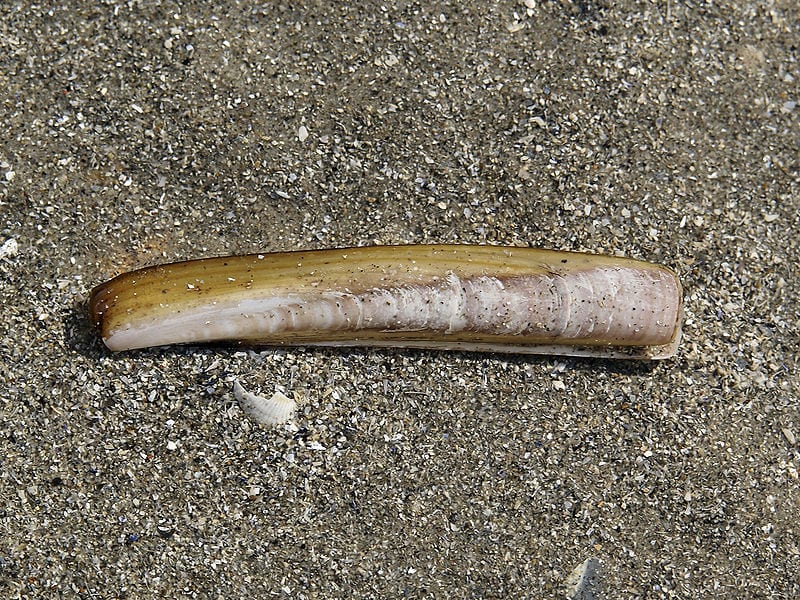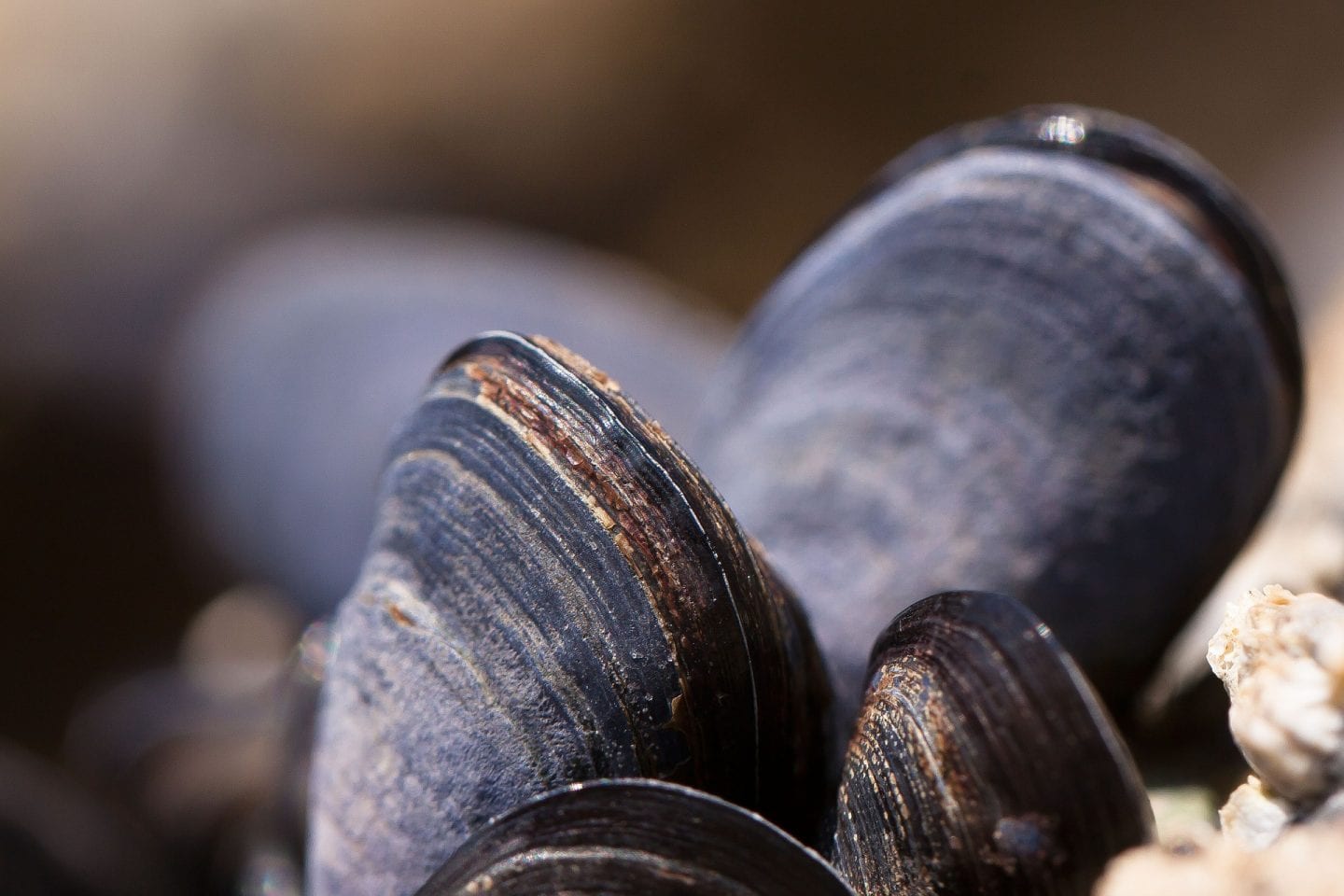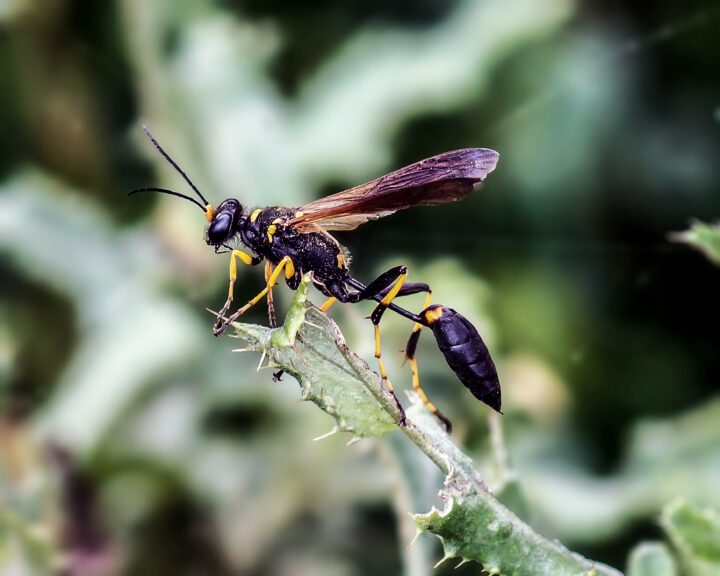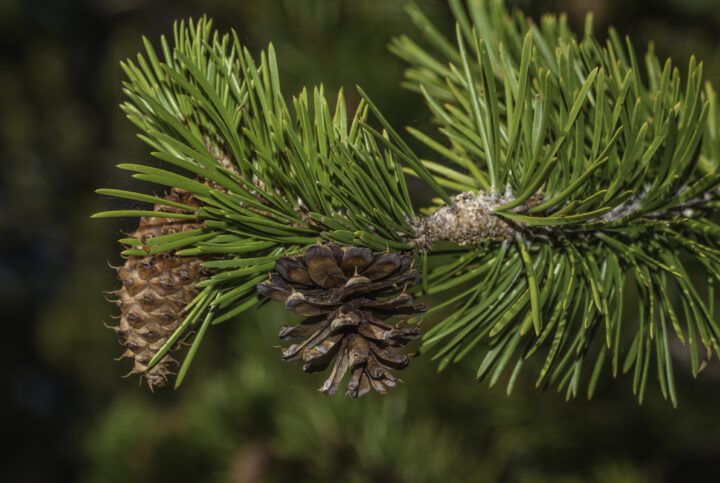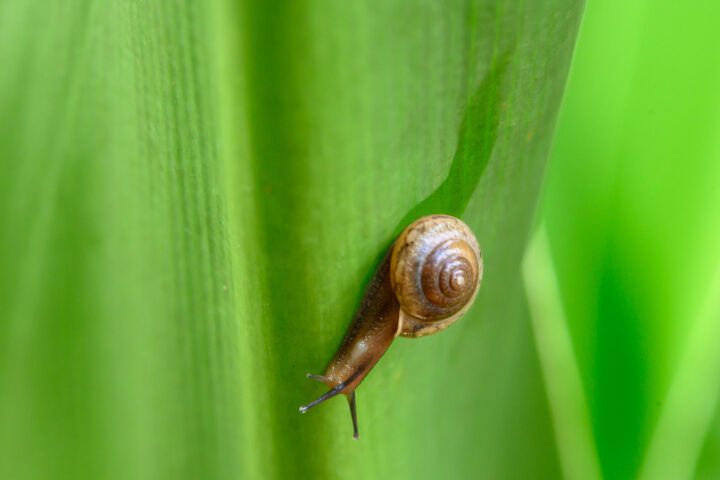The valves of the Atlantic razor clam reduce drag and the amount of energy required to reach burrow depth by contracting to locally fluidize the surrounding soil.
Introduction
Walking along a beach on the North American Atlantic coast as the tide rolls out, you might encounter something that looks a bit like a twig sticking out of the wet sand. But glance away, and it might vanish. Atlantic razor (or jackknife) clams thrive in bays and estuaries from Newfoundland to South Carolina. They are filter feeders that strain plankton and other tidbits of organic matter from the water to eat, and they burrow quickly under the sand to escape predators.
“They readily take alarm and even a slight jarring of the mud of the bottom in their vicinity serves as a signal for them to instantly disappear,” wrote Gilman A. Drew—naturalist and biology professor. He was one of the first scientists to study the Atlantic razor, documenting its behavior and anatomy in the early 1900s. The clams have shell with two halves that can open like a book. They also have a squirmy foot that protrudes from the lower end of their shells, which flicks to propel themselves forward and contorts to help bury themselves in the mud.
The Strategy
“In burrowing, the foot is worked into the mud as it is protruded, the end is then swelled into a knob, and by its sudden withdrawal the shell is drawn to the position of the anchored end of the foot,” wrote Drew. At first glance, it seems that the foot is solely responsible for its ability to submerge. But the complete picture, like the mud it burrows into, was less clear to Drew, who didn’t know of the shell’s importance.

Just as it wasn’t obvious to Drew, it’s not clear in the video how the two valves of the razor clam’s shell are also integral to its ability to dig down.
The whole movement is a kind of double-anchored wriggle that scientists at the Massachusetts Institute of Technology studied in detail. They found that a clam first reaches its foot downward, then pushes upward on the valves. Then the valves both contract inward using internal muscles to make its body narrower. The contraction of the shell’s valves pushes blood into the foot. As blood engorges the foot, it inflates like a balloon to act as an anchor in the mud. Once the foot has solid “footing,” it contracts and pulls the flattened shell towards the anchor point, deeper into the sand. At this point, the anchor point reverses. The valves expand, widening the shell so that it wedges it into the sand. Now bolstered by the shell above—the foot is free to relax and once again reach down to begin the cycle anew. With each cycle, it seesaws farther below the sand’s surface.
Surprisingly, the researchers determined that the force generated by a clam’s muscle contractions should only be strong enough to enable it to burrow to depths of just 1 or 2 centimeters (0.4 to 0.8 inches) based on the resistance of a bed of packed, wet sand. Yet in reality, they dig down to 70 centimeters (2.3 feet) below the surface. To reach such depths, these clams must have another trick up their shells.
The mechanical properties of soil depend on how much space (occupied by water or air) exists between the solid particles. The fraction of empty space in a volume of soil is called the void fraction. The secret weapon is that the clam’s double-anchored maneuver increases the void fraction of the muddy mixture as it moves through the cycle.
It accomplishes this in two ways. When its two valves contract inward, the adjacent sand is left unsupported, and it caves in like a mini-mudslide. Then, similar to how drinking through a straw pulls water from a glass into your mouth, the force of the valves contracting sucks water from the surroundings into the loose pocket created by the “mudslide” around its shell. Together the mudslide and injected water create what’s called a “fluidized bed,” which is similar to a quicksand bubble around the clam. Throughout its movement cycle, the extent of the fluidized bed bubble grows, lowering resistance and unclogging its path downward.
The Potential
Two years after studying the clam’s movements, the same group of researchers developed RoboClam, a burrowing robot that mimics the actual clam’s fluidization technique. Inventing tools that efficiently tunnel into the ocean’s floor could allow us to dig deeper into our understanding of Earth’s origins. As metals become increasingly scarce, finding ecologically friendly methods for deep-sea mining could also become paramount.
The way that razor clams burrow may even point the way towards improving existing processes such as extracting natural gas in a way that uses less water and lowers the potential to contaminate groundwater.
Razor clam digging can also inspire a more general change in our approach to transportation. Cars, rockets, or other vehicles could take in and redistribute a surrounding medium to more efficiently move through it. This is a potential biological model for thrusters, such as the Mach-effect gravitational assist (MEGA) drive being investigated by NASA scientists.
